We are here for you to provide the important current affairs April 18 2018 which have unique updates of all daily events from all newspapers such as The Hindu, The Economic Times, PIB, Times of India, India Today, Indian Express, Business Standard, all Government official websites. Our complete current affairs helps you to get more marks in Banking, insurance, UPSC, SSC, CLAT, Railway and all other competitive Exams.
- Daily Current Affairs
- Try our Current Affairs Quiz 2018
- Read Our 2018 Current Affairs
Click here to try Current Affairs Quiz : April 18 2018

Click Here to Read Current Affairs April 2018
INDIAN AFFAIRS
Bihar has highest rate of crime against SC/ST
According to latest data released by National Crime Records Bureau (NCRB), Bihar has the highest rate of crimes against Schedule Caste/Schedule Tribe population.
Data on crime against SC/ST:
i. As per NCRB data, crime against SC/ST is lowest in West Bengal.
ii. Madhya Pradesh reported the highest rate of crime (43.4%) against SCs specifically, while West Bengal had the lowest at 6%.
iii. Rajasthan reported the highest rate of crime (12.9%) against STs specifically, while West Bengal had the lowest at 1.6%.
iv. The data also revealed that since 2014, crimes against SCs have increased by one percent overall, with a steep rise of 5.5% occurring in 2016.
v. On the other hand, crimes against STs since 2014 have seen an overall decrease of 3.8%, with a significant drop of 8 percent in 2015.
Quick Facts about National Crime Records Bureau (NCRB):
♦ Formed in – 1986
♦ Responsible for – collecting and analysing crime data as defined by the Indian Penal Code (IPC)
♦ Parent Ministry – Union Ministry of Home Affairs
♦ Headquarters – New Delhi
♦ Current Director – Ish Kumar
Smriti Irani launches GNFC’s Neem project in UP
On April 13, 2018, Union Cabinet Minister Smriti Irani inaugurated Gujarat Narmada Valley Fertilizers & Chemicals Limited (GNFC’s) Neem Project in Amethi district of Uttar Pradesh.
 More Information about GNFC’s Neem Project:
More Information about GNFC’s Neem Project:
i. Under this project, GNFC intends to collect 8,000 to 10,000 MT Neem seeds from Uttar Pradesh, which in turn will provide additional income of Rs 12-15 crore for over one lakh rural woman from 2,500 villages in the State.
ii. The project will not only provide additional income to rural women but will also help in fulfilling Prime Minister’s vision of Neem-coated urea in the interest of millions of farmers of the country.
iii. GNFC has been running Neem Project since 2015, in over 60 districts of five states including Gujarat, Maharashtra, Madhya Pradesh, Karnataka and Rajasthan.
iv. Earlier, it signed memorandum of understanding (MoU) with IFFCO to expand this project in 15 districts of Uttar Pradesh.
Quick Facts about GNFC:
♦ Founded in – 1976
♦ Located in – Bharuch, Gujarat
♦ Jointly Promoted by – Government of Gujarat and the Gujarat State Fertilizers & Chemicals (GSFC)
DARPAN-PLI App launched by Manoj Sinha
On April 17, 2018, Minister of State (Independent Charge) for Communications, Manoj Sinha launched DARPAN-PLI App, which will help in collection of premium for Postal Life Insurance (PLI) and Rural Postal Life Insurance (RPLI) policies at Branch Post Offices anywhere in India.
 About DARPAN-PLI App:
About DARPAN-PLI App:
i. In context of this news, DARPAN refers to DIGITAL ADVANCEMENT OF RURAL POST OFFICE FOR A NEW INDIA (DARPAN) Project, a project launched by Department of Posts as a part of its IT Modernisation plan, aimed at connecting all 1.29 lakh Rural Branch Post Offices in the country, to enable them to do online Postal and Financial Transactions.
ii. The DARPAN-PLI App will not only help in collection of premium for PLI and RPLI policies at Branch Post Offices, but will also enable indexing of maturity claims in respect of PLI and RPLI policies at Branch Post Office itself.
iii. This app is a part of Department of Posts endeavour to go digital which will help in providing better after-sales service to customers of PLI and RPLI, particularly to those living in rural areas of India.
‘Study in India’ portal of HRD Ministry launched by Ms. Sushma Swaraj
On April 18, 2018, Union Minister of External Affairs, Ms. Sushma Swaraj launched ‘Study in India’ portal of Human Resource Development (HRD) Ministry in presence of Union Minister of Human Resource Development, Prakash Javadekar and Minister of State for HRD, Dr. Satya Pal Singh.
Details about ‘Study in India’ portal:
i. ‘Study in India’ portal is aimed at making India a preferred destination for the foreign students to pursue their education.
ii. Through this portal, students from 30 countries across South Asia, Africa, Commonwealth of Independent States (CIS) and Middle East can select and apply for different courses from 150 select Indian institutions.
iii. The 150 institutions are the ones which have a high National Assessment and Accreditation Council (NAAC) and National Institutional Ranking Framework (NIRF) ranking.
iv. ’Study in India’ film was also launched on the occasion.
POSHAN Abhiyaan: 1st meeting of National Council on India’s Nutrition Challenges held in New Delhi
On 18th April 2018, the first meeting of National Council on India’s Nutrition Challenges under POSHAN Abhiyaan was held at Vigyan Bhawan, in New Delhi.
 First meeting of National Council on India’s Nutrition Challenges:
First meeting of National Council on India’s Nutrition Challenges:
i. Rajiv Kumar, Vice Chairman NITI Aayog, Dr V K Paul, Member (Health & Nutrition) NITI Aayog, Amitabh Kant, CEO, NITI Aayog, and representatives of several ministries of the Central and State Governments participated in the meeting.
ii. Mandate of the National Council on India’s Nutritional Challenges is as follows:
- Provide policy directions to address India’s nutritional challenges through coordinated inter-sectoral action.
- Coordinate and review convergence between Ministries.
- Review programmes for nutrition on a quarterly basis.
iii. The Council will submit its report once in 6 months to the Prime Minister.
iv. The POSHAN Abhiyaan aims to reduce the level of under-nutrition and other related problems by making sure the convergence of various nutrition related schemes.
v. It overlooks and reviews implementation of such schemes. It uses existing structural arrangements of line Ministries wherever available.
Some important temples in India:
♦ Lotus Temple – New Delhi
♦ Rameshwaram (Ramanathaswamy Temple) – Rameswaram, Tamil Nadu
♦ Kedarnath Temple – Kedarnath, Uttarakhand
Bharat-22 ETF follow-on offer may be worth Rs. 10,000 crore
The Finance Ministry might bring up a Rs 10,000-crore follow-on fund offer of the Bharat-22 exchange traded fund (ETF) as it plans to dilute stake in Coal India to meet the minimum public holding norm.
Bharat-22 ETF follow-on offer may be worth Rs. 10,000 crore:
i. The finance ministry is also focused on using the ETF route to sell off government shares held through SUUTI (Specified Undertaking of Unit Trust of India) in private companies – ITC, Axis Bank and L&T.
ii. In November 2017, the government had introduced Bharat-22 ETF consisting of shares of 22 companies like public sector undertakings (PSUs), public sector banks, ITC, Axis Bank and L&T.
iii. The fund had gathered bids for Rs 32,000 crore. But the government retained only Rs 14,500 crore.
iv . PSUs that are part of the new Bharat ETF-22 are ONGC, IOC, SBI, BPCL, Coal India and Nalco.
v. Other central public sector enterprises on the list are Bharat Electronics, Engineers India, NBCC, NTPC, NHPC, SJVNL, GAIL, PGCIL and NLC India.
vi. Three public sector banks: SBI, Indian Bank and Bank of Baroda are in the Bharat-22 index.
vii. It has been said that, through the ETF route, the government might dilute about 3.55 % stake held in Coal India to comply with the minimum 25 % public float requirement as mandated by SEBI.
viii. It was also said that, the ETF route is a safer mode of disinvestment as it protects investors against stock market volatility.
ix. Before introduction of Bharat-22 ETF, the government had launched the CPSE ETF consisting of stocks of the following PSUs – ONGC, Coal India, IOC, GAIL (India), Oil India, PFC, Bharat Electronics, REC, Engineers India and Container Corporation of India.
About Coal India Limited (CIL):
♦ Chairman & MD – Gopal Singh
♦ Headquarters – Kolkata, West Bengal
E-way bill to be rolled out on April 20, 2018 in six states
Intra-State E-way (Electronic Way) bill i.e. the E-way bill for movement of goods within the state will be rolled out in six more states from April 20, 2018.
 More information pertaining to roll-out of Intra-State E-way bill:
More information pertaining to roll-out of Intra-State E-way bill:
i. Six states in which Intra-State E-way bill will be rolled out from April 20, 2018 are Bihar, Jharkhand, Haryana, Himachal Pradesh, Tripura and Uttarakhand.
ii. In context of this news, it is important to note that E-way bill system for moving goods worth over Rs 50000 from one state to another has already been rolled out since April 1, 2018.
iii. Karnataka is the only state which had rolled out Intra-State E-way bill system from April 1, 2018. After that, Intra-State E-way bill system was rolled out in five states viz. Andhra Pradesh, Telangana, Gujarat, Kerala and Uttar Pradesh from April 15, 2018.
iv. E-way bill provision of the GST is an anti-evasion measure which would help in increasing tax collections by curbing trade that is being undertaken on cash basis.
Union Environment Ministry releases the draft of National Clean Air Programme
On 17th April 2018, the Environment Ministry released the draft of National Clean Air Programme aimed to reduce air pollution.
National Clean Air Programme:
i. The Environment Ministry has published the draft of the National Clean Air Programme (NCAP) on its website. It has invited comments from stakeholders by 17th May 2018.
ii. Objectives of the NCAP as mentioned by the Environment Ministry in the draft are:
- to augment and develop an effective and a proficient ambient air quality monitoring network throughout India to ensure comprehensive and reliable database
- to have efficient data dissemination and a public outreach mechanism for timely measures for prevention and mitigation of air pollution,
- to have a feasible management plan for prevention, control and reduction of air pollution
iii. Measures that will be taken for reducing air pollution are:
- augmenting the air quality monitoring network
- identification of alternative technology for real-time monitoring
- setting up of 10 city super network
- indoor air pollution monitoring and management and air pollution health impact studies
- air quality forecasting system
- issuance of notification on dust management
- a three-tier mechanism for review, assessment and inspection for implementation and a national emission inventory
Some UNESCO Cultural Heritage sites in India:
♦ Elephanta Caves – Maharashtra
♦ Ellora Cave – Maharashtra
♦ Fatehpur Sikri – Uttar Pradesh
INTERNATIONAL AFFAIRS
Visit of Prime Minister of India to Sweden (16-17 April 2018)
On 16th and 17th April 2018, the Prime Minister of India Narendra Modi visited Sweden on the invitation of Prime Minister of Sweden Stefan Lofven.
i.During the visit, India and Sweden hosted an India-Nordic Summit on 17 April 2018, named ‘India-Nordic Summit: Shared Values, Mutual Prosperity’.
ii. To promote bilateral cooperation, India-Sweden Joint Action Plan was decided………………………………………………………………………………Click here to Read More
India wins six elections to UN Economic and Social Council bodies
On April 16, 2018, India won six elections to UN Economic and Social Council (ECOSOC) bodies.
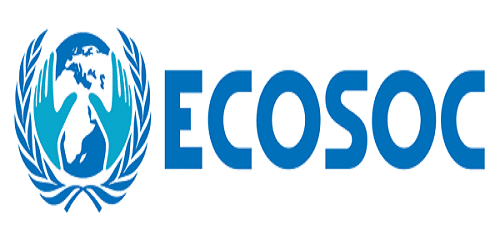 India’s election to ECOSOC bodies:
India’s election to ECOSOC bodies:
i. By winning these elections, India won places on the executive boards of four UN bodies, three commissions and a committee.
ii. In election for the Non-Governmental Organisations (NGO) Committee, within the Asia-Pacific group, India got the highest number of votes (46).
iii. The NGO committee scrutinises the NGOs applying for consultative status with ECOSOC. It is an important body as it has the power to recommend or block them.
iv. India will serve a four-year term on this committee starting January 2019.
v. Through another single election, India made its way to the executive boards of the UN Development Programme (UNDP), the UN Population Fund (UNFPA) and the UN Office for Project Services (UNOPS) for a three-year terms from January 2019.
India has also been elected to following bodies:
| Board/Commission | Term |
| Executive Board of UN-Women | Three-year term starting January 2019 |
| Commission on Population and Development | Will start immediately. Term will end in September 2021 |
| Commission for Social Development | Four-year term starting immediately |
| Commission on Crime Prevention and Criminal Justice | Three-year term starting January 2019 |
Quick Facts about United Nations Economic and Social Council (ECOSOC):
♦ Formed in – 1945
♦ Role – serves as central forum for discussing international economic and social issues and formulating policy recommendations addressed to UN member countries
♦ Current President – Marie Chatardova
China moots India-Nepal-China economic corridor through Himalayas
On April 18, 2018, China proposed a India-Nepal-China economic corridor with multi-dimensional connectivity through the Himalayas.
i. This proposal was put forth by China after visiting Nepalese foreign minister Pradeep Kumar Gyawali held talks with his Chinese counterpart Wang Yi in Beijing.
ii. China has proposed this trilateral economic corridor on basis MoU signed by Nepal to join its multi-billion-dollar Belt and Road Initiative (BRI).
iii.The China-Nepal MoU pertaining to BRI envisages a well-developed connectivity network through ports, railways, highways, aviation, power and communications, which according to China will offer suitable conditions for an economic corridor connecting China, Nepal and India.
Quick Facts about China:
♦ Capital – Beijing
♦ Currency – Renminbi
♦ Current President – Xi Jinping
♦ Important Rivers – Yangtze, Yellow River
BANKING & FINANCE
Kotak Bank goes past SBI to become India’s 2nd most valuable lender
On April 16, 2018, market capitalisation of Kotak Mahindra Bank, for the first time surpassed that of State Bank of India.
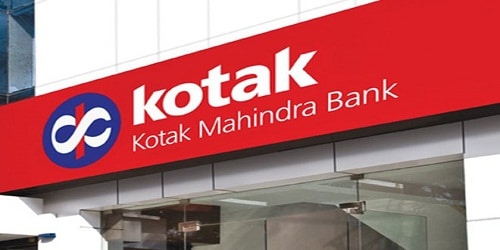 Market Valuation of Kotak Mahindra Bank:
Market Valuation of Kotak Mahindra Bank:
i. Market value of a company’s outstanding shares is referred to as market capitalisation (m-cap). It is calculated by multiplying the current market value of company’s share with total outstanding shares.
ii. At the end of the trading day on April 16, 2018, Kotak Mahindra Bank’s market capitalisation rose to Rs 2.23 lakh crore compared with SBI’s market cap of Rs 2.22 lakh crore.
iii.On account of this surge, Kotak Mahindra Bank has become the second-most valuable bank in India after HDFC Bank.
iv. Among all Indian banks, HDFC Bank has the highest market capitalisation of Rs 5.03 lakh crore.
Quick Facts about Kotak Mahindra Bank:
♦ Granted Banking Licence in – 2003
♦ Headquarters – Mumbai, Maharashtra
♦ Founder, Executive Vice Chairman and MD – Uday Kotak
♦ Tagline – ‘Let’s make money simple’
1.55 lakh post offices to be empowered as Payments Banks: Manoj Sinha
On 17th April 2018, Communications and Railways Minister Manoj Sinha said that, the government aims to empower 1.55 lakh post offices after integration with 650 Payments Banks to offer digital services including financial inclusion.
1.55 lakh post offices to be empowered as Payments Banks:
i. Manoj Sinha has said that, in 5 to 6 months, 1.5 lakh postal offices will operate as Post Payments Banks.
ii. He said that after pilot launch of India Post Payments Bank (IPPB) in Raipur and Ranchi, Payments Banks will be started in the remaining 648 locations soon.
iii. The Payments Banks will offer direct benefit transfer (DBT) to a large number of people.
iv. India Post Payments Bank (IPPB) launched its pilot services in Raipur and Ranchi in January 2017.
v. In 2015, the Reserve Bank of India (RBI) had approved Payments Banks to 11 entities. It also allowed the Department of Posts to accept deposits up to Rs 1 lakh per individual or a small business.
vi. He also launched Digital Advancement of Rural Post Office for a New India or Darpan program with a budget of Rs 1,300 crore, under the IT modernisation initiative to enable digital transactions and online postal services in 1.29 branch post offices in rural regions of India.
vi. Bharti Airtel offers Machine-to-Machine (M2M) SIM cards for postal department’s modernisation initiative. IT comapnies like Infosys and TCS are vendor-partner in the postal department’s modernisation drive.
vii. He said that the Postal Life Insurance (PLI) now covers people other than its employees with lesser premium and more returns. He added that this has helped to gather Rs 6 crore of additional revenue within 4 months of its introduction.
viii.He said that, out of the projected 250 Aadhaar enrolment and updation centres and Post Office Passport Seva Kendras (POPSK), 178 have become fully functional now.
ix. He also launched Darpan-PLI app that enables renewal of pension including premium collection and indexing of maturity of claim.
About India Post Payments Bank (IPPB):
♦ MD & CEO – Suresh Sethi
♦ Headquarters of India Post – New Delhi
NABARD approves Rs 14,690 crore funding to Rajasthan
National Bank for Agriculture and Rural Development (NABARD) has announced that it has extended total credit support of Rs 14690 crore to Rajasthan during 2017-18.
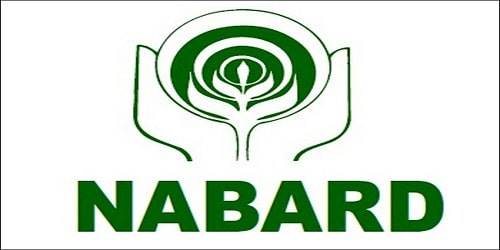 NABARD’s funding to Rajasthan:
NABARD’s funding to Rajasthan:
i. Rajasthan has been one of the biggest beneficiaries under the Rural Infrastructure Development Fund (RIDF) of NABARD.
ii. Under RIDF, NABARD disbursed concessional loan of Rs 1851.29 crore to Rajasthan state government during 2017-18.
iii. Funds sanctioned by NABARD were used for 10 irrigation projects, construction of 1614 roads and two rural drinking water supply projects in the state.
Quick Facts about NABARD:
♦ Established in – 1982
♦ Headquarters – Mumbai, Maharashtra
♦ Current Chairman – Dr. Harsh Kumar Bhanwala
BUSINESS
India expected to grow at 7.4% in 2018: IMF
As per latest World Economic Outlook, released by International Monetary Fund (IMF) on April 17, 2018, Indian economy is projected to grow 7.4% in the current fiscal i.e. FY 2018-19 and accelerate further in FY 2019-20 to 7.8%.
 IMF’s outlook on Indian Economy:
IMF’s outlook on Indian Economy:
i. The report has outlined that in the medium term, there will be a gradual increase in India’s growth rate as structural reforms raise potential output and Indian will thus consolidate its position as the world’s fastest-growing major economy.
ii. India’s growth in current and next fiscal will come on back of strong private consumption as well as fading transitory effects of demonetisation (in November 2016) and roll out of Goods and Services Tax (in July 2017).
iii. Consumer inflation is projected at 5% for the current as well as next year while the current account deficit is seen at 2.3% of Gross Domestic Product (GDP) this fiscal and 2.1% next fiscal.
iv. As per IMF, Chinese Economy will slow down from 6.9% in 2017 to 6.6% in 2018 and further to 6.4% in 2019 while Global growth is seen stable at 3.9% over the current and next calendar years.
Quick Facts about International Monetary Fund (IMF):
♦ Founded in – 1945
♦ Headquarters – Washington D.C., US
♦ Current Managing Director – Christine Lagarde
CII projects FY19 GDP growth at 7.3-7.7 percent
On April 12, 2018, Confederation of Indian Industry (CII) stated that India’s gross domestic product (GDP) is expected to grow at 7.3-7.7 percent during the 2018-19 financial year.
CII’s outlook on Indian Economy:
i. The growth in 2018-19 will come on back of strong demand in the rural economy, including agriculture and non-farm activities, as well as better global growth climate.
ii. Strong demand in the rural economy will boost investment in industry, which in turn will increase manufacturing activities.
iii. As per CII, agriculture sector is expected to grow at 2.5-3.5 percent, industrial sector to grow at 7.2-7.5 percent and services sector to grow at 8.4-8.7 percent.
iv.Rising oil prices has been identified as a macro challenge. However, improving industrial performance is expected to compensate for the same.
Quick Facts about CII:
♦ Formed in – 1895
♦ Headquarters – New Delhi
SCIENCE & TECHNOLOGY
Indian scientists make Ayurvedic drug to cure dengue
Indian scientists have formulated world’s first ayurvedic drug to cure dengue, which is likely to be available in the market by 2019.
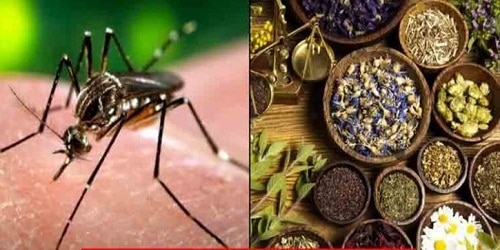 More information about Ayurvedic drug to cure dengue:
More information about Ayurvedic drug to cure dengue:
i. Dengue (caused by the aedes aegypti mosquito which breeds in clean water), is the fastest growing mosquito-borne disease across the world as per World Health Organisation (WHO).
ii. first Ayurvedic drug to cure Dengue has been made with seven herbal ingredients which are in use in Ayurveda system of medicine.
iii. Pilot studies of this drug (in highly concentrated liquid form) which have proved the clinical safety and efficacy of the drug were already conducted by Central Council for Research in Ayurvedic Sciences (CCRAS), an autonomous body under the Ministry of AYUSH and Indian Council of Medical Research (ICMR’s), regional research centre in Belgaum in Karnataka.
iv. Double-Blind Placebo-Controlled Clinical Trial (a medical study involving human participants) of the tablet form of this drug is going on in the medical colleges of Belgaum and Kolar in Karnataka.
Scientists discover sweet spot of activity in immune system, key to fight cancer
Scientists in the University of Southampton have discovered that, stimulating a specific location on the surface of immune cells can be targeted with antibodies to help in fighting cancer.
Sweet spot of activity in immune system:
i. This discovery is related to a receptor called CD40. CD40 is found on the surface of certain immune cells which regulates their activity.
ii. The CD40 receptors are normally distributed on the surface of resting immune cells. They have to be very precisely clustered in order to trigger an immune response against cancer.
iii. Pre-clinical study was performed by scientists from the University of Southampton’s Antibody and Vaccine Group and researchers in Biological Sciences and the University of Hamburg.
iv. They also found that the ability of antibody drugs, which bind to the CD40 protein, to cluster the immune cell’s receptors, played a major role in triggering the receptors. This study has been published in Cancer Cell.
Some important stadiums in India:
♦ The Arena – Ahmedabad, Gujarat
♦ Tau Devi Lal Stadium – Gurgaon, Haryana
♦ Bakhshi Stadium – Srinagar, Jammu & Kashmir
OBITUARY
Veteran Journalist Surendra Nihal Singh Passes Away
On 16th April 2018, journalist S Nihal Singh died due to multiple organ failure, at the National Heart Institute, in New Delhi.
Death of Surendra Nihal Singh:
i. S Nihal Singh was 88 years old. He was the Chief Editor of The Statesman, Editor-in-Chief Indian Express and Editor of Khaleej Times.
ii. He was the founding editor of the The Indian Post. He had written several books. He had also written columns in newspapers.
iii. He received the International Editor of the Year Award in New York. He was Director, Press Institute of India. He was also President of the Press Club of India.
Some museums in New Delhi:
♦ National Handicrafts and Handlooms Museum
♦ National Museum of Natural History
♦ National Rail Museum
Former First Lady Barbara Bush dies
On 17th April 2018, Barbara Bush, the Former First Lady of the United States, passed away due to ill health at her home in Houston, United States.
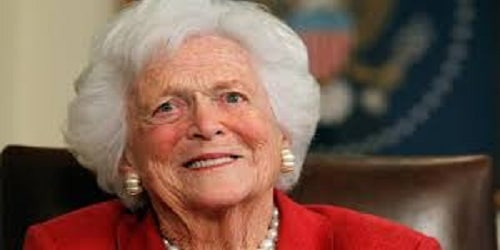 Death of Barbara Bush:
Death of Barbara Bush:
i. Barbara Bush was 92 years old. She had been suffering from chronic obstructive pulmonary disease and congestive heart failure in the past few years.
ii. She was the wife of former US President George Herbert Walker Bush, and the mother of George Walker Bush, who is also a former US President.
iii. She was the First Lady of the United States from 1989 to 1993. She was the Second Lady of the United States from 1981 to 1989.
iv. She had worked towards attaining universal literacy. She founded the Barbara Bush Foundation for Family Literacy.
Some important lakes in India:
♦ Longest lake in India – Vembanad, Kerala
♦ Highest Lake in India – Cholamu Lake, Sikkim
IMPORTANT DAYS
World Heritage Day – April 18
On 18th April 2018, World Heritage Day also known as International Day For Monuments and Sites was celebrated all over the world.
 World Heritage Day
World Heritage Day
i. When: World Heritage Day, also known as the International Day for Monuments and Sites, is celebrated every year on 18th April since 1982.
ii. The International Day for Monuments and Sites was proposed by the International Council on Monuments and Sites (ICOMOS) on 18th April 1982. It was approved by the General Assembly of UNESCO in 1983.
iii. This day is celebrated to create awareness on the cultural heritage of humanity, their vulnerability and efforts needed to protect and conserve them.
iv. India has 36 world heritage sites approved by the UNESCO. This is the sixth highest in the world. Italy has the most number of heritage sites in the world with 53 sites. It is followed by China with 52 sites.
v.Theme for World Heritage Day 2018: Heritage for Generations.
About International Council on Monuments and Sites (ICOMOS):
♦ President – Mr Toshiyuki Kono
♦ Location – Paris, France




